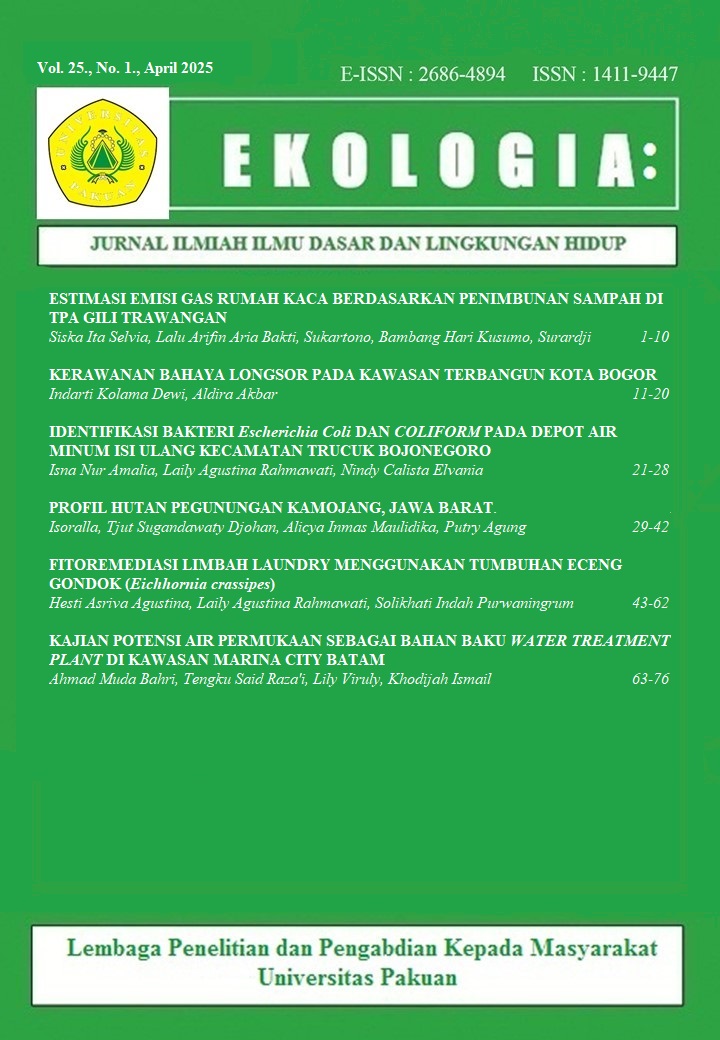FITOREMEDIASI LIMBAH LAUNDRY MENGGUNAKAN TUMBUHAN ECENG GONDOK (Eichhornia crassipes)
Abstract
The increasing number of laundry businesses has led to higher detergent usage, containing pollutants such as Sodium Dodecyl Benzene Sulfonate (NaDBS) and Sodium Tripolyphosphate (STPP), which are difficult to decompose naturally and can contaminate aquatic environments. This study aims to analyze the effectiveness of phytoremediation using water hyacinth (Eichhornia crassipes) in reducing pollutant concentrations in laundry wastewater, focusing on COD, TSS, and phosphate parameters. The research utilized purposive sampling to collect laundry wastewater samples from a large-scale laundry outlet in Sumbang, Bojonegoro, and water hyacinth samples from a fish pond in Sukorejo, Bojonegoro. Wastewater treatment was conducted in treatment tanks for 14 days, with initial (day 0) and final (day 14) sample testing performed at the PPSDM Migas Cepu Laboratory. This research was conducted in an experimental and quantitative way to calculate its effectiveness. The results showed a visible transformation in laundry wastewater from turbid gray water to a clearer state after 14 days of treatment. Physical changes were also observed in the water hyacinth, including leaf discoloration to yellowish-brown and stem decomposition. Laboratory analysis confirmed that phytoremediation using water hyacinth effectively reduced pollutant concentrations, achieving COD reduction of 74–76%, TSS reduction of 90–95%, and phosphate reduction of 75–91%. Among these parameters, TSS removal showed the highest efficiency. These findings indicate that water hyacinth can serve as an eco-friendly alternative for laundry wastewater treatment.
Keywords: Laundry Wastewater, Water Hyacinth, Phytoremediation
Downloads
Published
How to Cite
Issue
Section
License

This work is licensed under a Creative Commons Attribution-NonCommercial-ShareAlike 4.0 International License.













